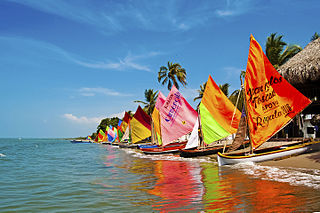
Colombia, officially the Republic of Colombia, is a sovereign state largely situated in the northwest of South America, with territories in Central America. Colombia shares a border to the northwest with Panama, to the east with Venezuela and Brazil and to the south with Ecuador and Peru. It shares its maritime limits with Costa Rica, Nicaragua, Honduras, Jamaica, Haiti, and the Dominican Republic. Colombia is a unitary, constitutional republic comprising thirty-two departments, with the capital in Bogotá.

Gonzalo Jiménez de Quesada y Rivera, also spelled as De Quezada and Ximénez, (Spanish: [gonˈθalo xiˈmeneθ ðe keˈsaða]; 1496 – other sources state 1506 or 1509 – Suesca, 16 February 1579 was a Spanish explorer and conquistador in northern South America, territories currently known as Colombia. He explored the northern part of South America. As a well-educated lawyer he was one of the intellectuals of the Spanish conquest. He was an effective organizer and leader, designed the first legislation for the government of the area, and was its historian. After 1569 he undertook explorations toward the east, searching for the elusive El Dorado, but returned to New Granada in 1573. He has been suggested as a possible model for Cervantes' Don Quixote.

Cumbia[ˈkumbja] is a folkloric rhythm and dance from Colombia. By the 1940s cumbia began spreading from the coast to other parts of Colombia alongside other costeña form of music, like porro and vallenato. Clarinetist Lucho Bermúdez helped bring cumbia into the country's interior. The early spread of cumbia internationally was helped by the number of record companies on the coast. Originally working-class populist music, cumbia was frowned upon by the elites, but as it spread, the class association subsided and cumbia became popular in every sector of society.. The researcher Guillermo Abadía Morales in his "Compendium of Colombian folklore", Volume 3, # 7, published in 1962, states that "this explains the origin in the zambo conjugation of musical air by the fusion of the melancholy indigenous gaita flute or caña de millo, i.e., Tolo or Kuisí, of Kuna or Kogi ethnic groups, respectively, and the cheerful and impetuous resonance from the African drums. The ethnographic council has been symbolized in the different dancing roles that correspond to each sex." The presence of these cultural elements can be appreciated thus:

The military and political career of Simón Bolívar,, which included both formal service in the armies of various revolutionary regimes and actions organized by himself or in collaboration with other exiled patriot leaders during the years from 1811 to 1830, was an important element in the success of the independence wars in South America. Given the unstable political climate during these years, Bolívar and other patriot leaders, such as Santiago Mariño, Manuel Piar, José Francisco Bermúdez and Francisco de Paula Santander often had to go into exile in the Caribbean or nearby areas of Spanish America that at the moment were controlled by those favoring independence, and from there, carry on the struggle. These wars resulted in the creation of several South American states out of the former Spanish colonies, the currently existing Venezuela, Colombia, Ecuador, Peru and Bolivia, and the now defunct Gran Colombia.

Antonio Amador José de Nariño Bernardo del Casal was a Colombian ideological precursor of the independence movement in New Granada as well as one of its early political and military leaders.

The period between 1810 and 1816 in the Viceroyalty of New Granada was marked by such intense conflicts over the nature of the new government or governments that it became known as la Patria Boba. Constant fighting between federalists and centralists gave rise to a prolonged period of instability. Similar developments can be seen at the same time in the United Provinces of the Río de la Plata. Each province, and even some cities, set up its own autonomous junta, which declared themselves sovereign from each other.

The United Provinces of New Granada was a country in South America from 1811 to 1816, a period known in Colombian history as the Patria Boba. It was formed from areas of the New Kingdom of Granada, roughly corresponding to the territory of modern-day Colombia. The government was a federation with a parliamentary system, consisting of a weak executive and strong congress. The country was reconquered by Spain in 1816.
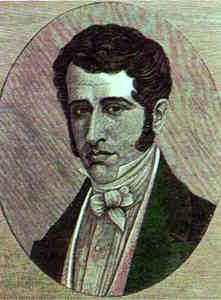
José Luis Álvaro Alvino Fernández Madrid was a Neogranadine statesman, physician, scientist and writer, who was President of the interim triumvirate of the United Provinces of New Granada in 1814, and President of the United Provinces of the New Granada in 1816. After the Spanish retook New Granada, he was barred from the country and was exiled in Havana, where he continued his scientific studies and worked as a doctor. He was later pardoned and allowed to come back to Colombia, and was appointed ambassador to France and to the United Kingdom where he died in 1830.

Antonio Villavicencio y Verástegui was a statesman and soldier of New Granada, born in Quito, and educated in Spain. He served in the Battle of Trafalgar as an officer in the Spanish Navy with the rank of Second Lieutenant. He was sent as a representative of the Spanish Crown to New Granada, where his arrival was used as an excuse in Santafé de Bogotá to start a revolt; this was known as the Florero de Llorente, which culminated in the proclamation of independence from Spain. After this incident he resigned his office and joined the cause of independence. He was later captured and became the first martyr executed during the reign of terror of Pablo Morillo.
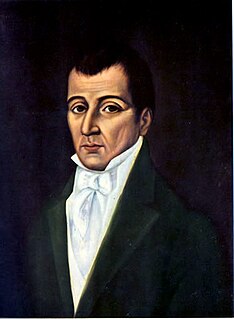
José Joaquín Justo Camacho Lago was a Neogranadine statesman, lawyer, journalist and professor, who worked for the Independence of the New Granada, what is now Colombia, and participated in the Open Cabildo which declared the Act of Independence, of which he was also a signer. He was executed during the Reign of Terror of Pablo Morillo after the Spanish invasion of New Granada.
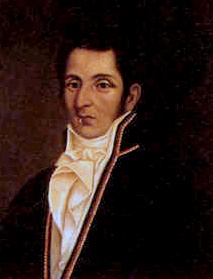
Manuel Rodríguez Torices was a Neogranadine statesman, lawyer, journalist, and Precursor of the Independence of Colombia. He was part of the Triumvirate of the United Provinces of New Granada in 1815, and served as Vice President of the United Provinces after the triumvirate. He was executed during the Reign of Terror of Pablo Morillo in 1816.
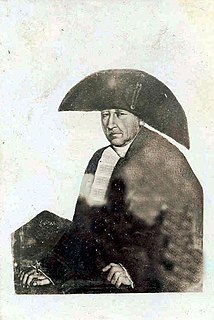
Manuel Benito de Castro (1751-1826) was a Neogranadine politician. He became President of the State of Cundinamarca in 1812 in place of Antonio Nariño.
Eduardo Lemaitre Román was a prominent historian, writer, journalist and politician who lived in Cartagena, Colombia. He held the positions of Representative (1943), Senator (1950) and Governor (1962) of Colombia's Bolivar department. He also served as Ambassador to UNESCO.
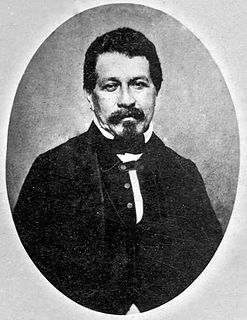
Juan José Nieto Gil was a Colombian politician, Army general and writer. A Liberal party caudillo of Cartagena, he served interimly as Governor of the Province of Cartagena, and was later elected President of the Sovereign State of Bolívar from 1859 to 1864. In 1861, during the Colombian Civil War, he fought on the side of the Liberal rebels against the Administration of President Mariano Ospina Rodríguez, and acting in rebellion proclaimed himself President of the Granadine Confederation in his right as the Presidential Designate, relinquishing power four months later to the Liberal leader, General Tomás Cipriano de Mosquera y Arboleda, who led a successful coup d'état against the Conservative Government in Bogotá.
The 'First Battle of Carabobo' (1814) was a battle in the Venezuelan War of Independence, in which the forces of the Second Republic, commanded by Simón Bolívar, defeated the Spaniard forces under Field marshal Juan Manuel de Cajigal y Martínez.
Hernán Venegas Carrillo Manosalvas was a Spanish conquistadorfor who participated in the Spanish conquest of the Muisca and Panche people in the New Kingdom of Granada, present-day Colombia. Venegas Carrillo was mayor of Santa Fe de Bogotá for two terms; in 1542 and from 1543 to 1544.
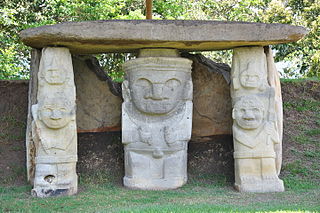
Juan Friede Alter was a Ukrainian-Colombian historian of Jewish descent who is recognised as one of the most important writers about Colombian history, the Spanish conquests and a proponent of indigenism; the defence of the rights and descriptions of the oppression of indigenous people.

Juan de Albarracín was a Spanish conquistador who participated in the Spanish conquest of the Muisca and Panche people. He was captain of the brigs which sailed up the Magdalena River from the Caribbean coast in 1536 and later discovered the high quality salt that lead the Spanish conquistadors along the Camino de la Sal up the slopes of the eastern ranges of the Colombian Andes towards the Muisca Confederation.

Antonio de Lebrija was born in 1507, in Alcántara, Extremadura, Spain; and died in 1540, in Brozas, also in Extremadura. He was a Spanish conquistador who participated in the Spanish conquest of the Muisca and the Chimila peoples. He was the treasurer of the conquest expedition which left Santa Marta in April 1536 following the high quality salt trail, the Camino de la Sal, along the Suárez River up the slopes of the Eastern Ranges of the Colombian Andes towards the Muisca Confederation.







